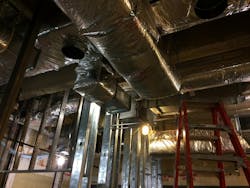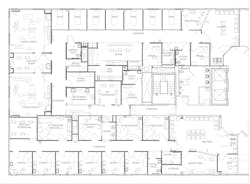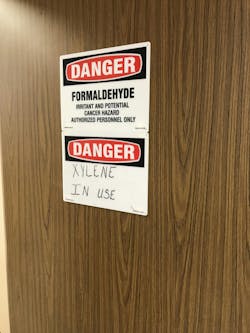Designing for Fire Safety and Resistance Remains Key For Healthcare Building Enclosures
From 2012 to 2014, about 5,700 medical facility fires were reported each year to fire departments in the United States, according to the U.S. Fire Administration. While this number has been declining over the last couple of decades due to improvements in regulations, staff training, and building materials, designing for fire safety remains a key concern for healthcare architects.
Tiffany Coppock, commercial building systems specialist at Owens Corning and former healthcare architect, says a key part of designing for fire safety includes proper compartmentalization of spaces. Preventing the spread of fire and smoke is critical to the health and safety of building occupants, especially patients who are not capable of self-preservation.
In the event of a fire, it is important that the affected area can be architecturally “locked down” and contained so that any damage and need for evacuation is minimized.
“The idea is to compartmentalize a fire, using passive fire containment construction and active mechanical systems to contain the hazards of combustible medical supplies, heat, smoke, and potential growth/spread to one space so that active fire suppression and fire fighters can contain and extinguish,” Coppock says. “It is possible to have a fire in an area of these buildings while the remainder of the building is completely unaware. They are still able to function and perform surgery or other critical procedures.”
One aspect of creating strong compartments is to create fire resistance rated wall, ceiling, and floor assemblies that contain non-combustible insulation products contributing to fire resistance. With today’s innovations, insulation products are expanding beyond simple thermal insulation properties to offer everything from enhanced acoustic performance to fire resistance to firestopping.
“Thermal performance is just a portion of the function. Now designers are exploring and learning what else the insulation product can do,” Coppock says.
Owens Corning’s formaldehyde-free Thermafiber® mineral wool insulation, introduced last year, is completely non-combustible and resists temperatures over 2,000 degrees Fahrenheit. Using fire test standards such as NFPA 285 (fire propagation resistance) and ASTM E119 (structural fire resistance), Owens Corning develops assembly testing and performance knowledge to add value to the development of fire-resistant building materials.
Because many hospitals and clinics are built for long-term operation — many easily operating over 30 years — Coppock says it is important to remember that they must accommodate change readily with little disruption, with potential new compartmentalization needed each time an addition or renovation is made. A space that did not previously need to be compartmentalized for fire or smoke may have a new piece of equipment or may be used for patients who are sedated, requiring new design accommodations.
Healthcare facilities are constantly renovating, upgrading and expanding. They have unique life safety challenges and can be more vulnerable to fire given the chemicals and heat-producing equipment present. Therefore, designing for fire safety using fire resistant and easily installed mineral wool in properly designed assemblies is especially critical in these settings.


